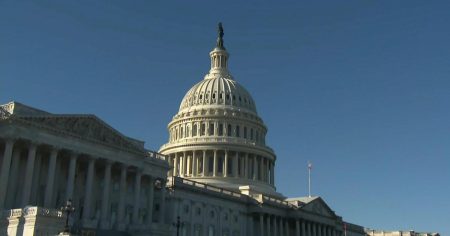A Federal Trial Over Alabama’s Congressional Map: A Fight for Fair Representation
The Start of a Crucial Legal Battle
A federal trial began in Montgomery, Alabama, on Monday, focusing on the state’s congressional map and whether it unfairly dilutes the voting power of Black residents. At the heart of the case is a court-created district that led to the election of a second Black representative, a historic first for Alabama. A three-judge panel will decide whether the congressional lines drawn by state lawmakers comply with the Voting Rights Act of 1965. The same panel previously ruled against Alabama in pre-trial decisions, reshaping the 2nd Congressional District, which allowed Rep. Shomari Figures to win the November election. This victory marked a milestone, as Alabama now has two Black representatives in its delegation for the first time in history.
The trial is expected to last at least two weeks, with Alabama seeking to reinstate its original maps, while plaintiffs argue that the court-ordered map should remain permanent. Plaintiff Shalela Dowdy emphasized the importance of the case, stating, “This case is about representation. We have a voice right now. We were able to exercise our right to vote to achieve that. We are hoping that the court-ordered map will be able to stay in place.” The trial represents a significant moment in the ongoing struggle for fair representation in Alabama.
Alabama’s Defense: Compliance with the Law
Alabama Attorney General Steve Marshall defended the state’s position, arguing that the original maps comply with the law. He noted that earlier rulings in the case were based on “preliminary assessments on an extremely expedited timeline” and expressed confidence that the state’s congressional redistricting plan is lawful. Marshall also pointed to the state’s success in defeating a separate legal challenge, which alleged that Alabama’s system of electing appellate judges statewide disenfranchises Black Alabamians. In that case, the state successfully argued that political party affiliation, not race, determines who wins court races.
Marshall stated, “We will show in the coming weeks that Alabama’s congressional redistricting plan is lawful, whether or not it favors Democrats as much as plaintiffs would prefer.” The state’s argument hinges on the idea that the maps were drawn based on political, not racial, considerations. However, critics argue that the maps disproportionately disadvantage Democrats, who rely heavily on Black votes in Alabama. Since white voters in the state overwhelmingly support Republicans, the congressional lines have historically favored the GOP.
The Origins of the Case: A Long-Standing Fight for Voting Rights
The case has its roots in lawsuits filed in 2021 by Black voters and civil rights groups, who alleged that Alabama’s congressional map disenfranchised Black voters. At the time, African Americans made up about 27% of the state’s population but were the majority in only one of the state’s seven congressional districts. The plaintiffs accused Alabama lawmakers of violating the Voting Rights Act by “packing” Black voters into a single majority-Black district and splitting other Black communities across multiple districts to limit their influence.
In 2022, the three-judge panel ruled that the map likely violated the Voting Rights Act and ordered the state to create a second majority-Black district or something close to it. The U.S. Supreme Court upheld this ruling in a surprise 5-4 decision in 2023. However, Alabama lawmakers drew new lines that the panel said flouted their instructions. In response, the court appointed a expert to draw a new map, which altered the bounds of southeast Alabama’s District 2, stretching it westward across the state to the Mississippi border and increasing its Black voting-age population to 48.7%.
Plaintiffs Argue for Fairness and Accountability
Deuel Ross, an attorney with the NAACP Legal Defense Fund representing the plaintiffs, expressed disappointment that Alabama is continuing to fight the case despite the court-ordered map already being in place. “This sort of recalcitrance is a throwback to an earlier unfortunate era of Alabama history. It’s also, frankly, a waste of the state’s resources,” Ross said. He argued that the plaintiffs can demonstrate a pattern of intentional discrimination that should once again place Alabama under the preclearance requirement of the Voting Rights Act.
Ross highlighted the historical significance of the case, noting that Alabama’s actions mirror those of the pre-Voting Rights Act era, where states would respond to court rulings by redrawing maps in ways that maintained discrimination under a different guise. “This is sort of exactly the thing that Alabama and other states did before the Voting Rights Act












